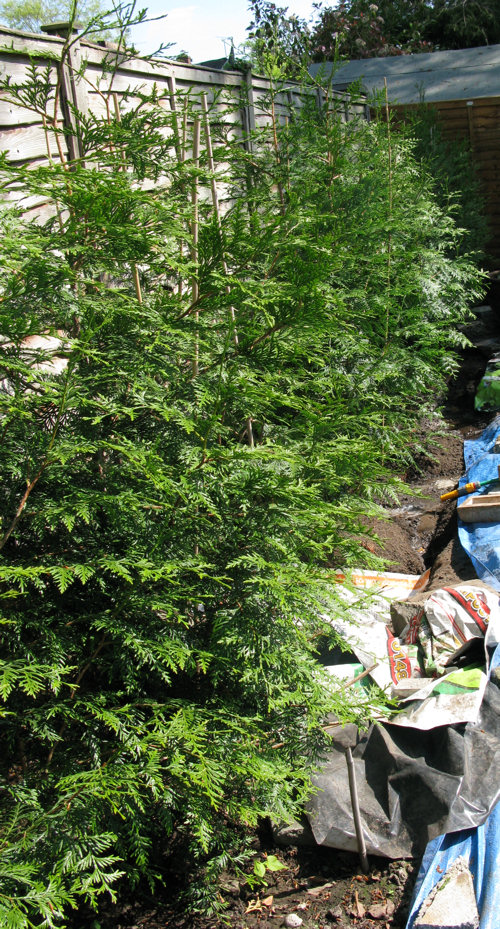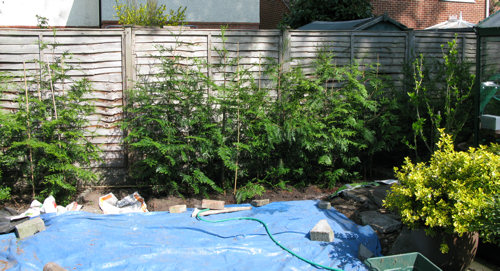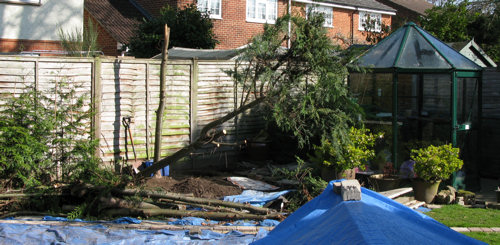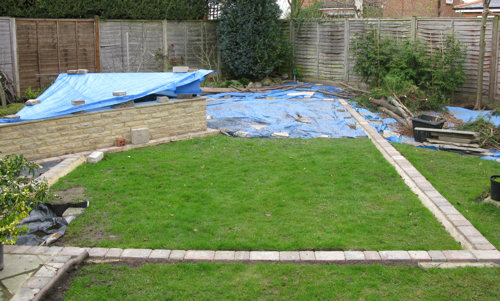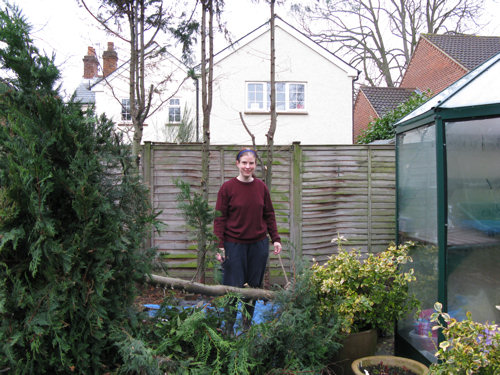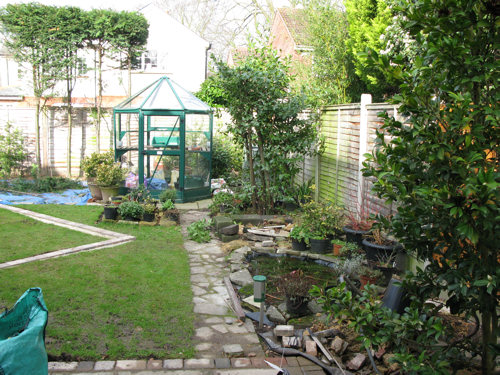After my plants from Buckingham Nurseries arrived, I ordered some more plants from Burncoose Nurseries in Cornwall. Their plants were more expensive than those from Buckingham Nurseries (although bigger) but they do an excellent range of plants that are hard to get from anywhere else. I ordered an acca and a kalmia. The kalmia, together with the holly that I bought from Buckingham Nurseries, will replace the bay tree and will help shield the compost bins from view. I also ordered a skimmia to go in the side border. I wanted a female one because it does berries and because there are some male ones in the communal shrubbery on the other side of the road, and I thought it was a bit of a waste having male skimmias if there weren’t any female ones for them to have berries with.
Last Friday my package arrived, and I was very pleased it was so quick, as the website had said the kalmia was out of stock. But then I pulled out the delivery note, and saw that the package apparently contained three Coronilla plants for someone in Whitby with a very similar surname to mine. The courier was long gone, and I realised that I had to unpack the parcel, whatever it contained, because otherwise the plants would die. So I unpacked it and it did indeed contain three Coronillas.
Burncoose Nurseries kindly let me keep the Coronillas, which was sensible because I don’t think they would have been very healthy after having two journeys in a cardboard box, and so I had to look them up on the Internet because I had never heard of them. Apparently it’s a very nice plant, which flowers a lot, but can be susceptible to a very cold winter. I think I will plant one of them in my front garden, by the house wall, where it will get lots of sun and a bit of frost protection. They don’t live very long even if they don’t get frozen to death, so I may take some cuttings in the summer if I decide I like it. But by then the acca may well be big enough to take up all the available space itself, so I may not want to plant a replacement coronilla. Anyway, events like this are why it is difficult to work out a planting plan.
Burncoose Nurseries sent out my proper order straight away, and here is a picture of my new plants. I have given one of the coronillas to my friend Sharon (whose husband Graham helped me demolish the last lot of Leylandii).
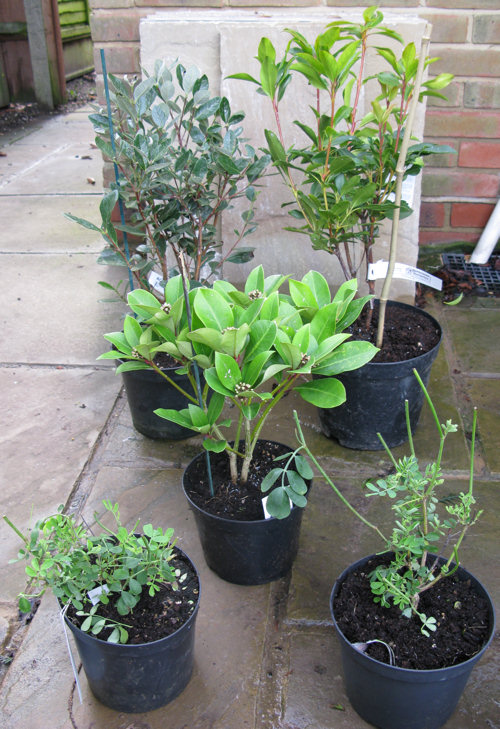
Acca, kalmia, skimmia and coronillas
The first part of the week has been quite dull and rainy, although I haven’t minded because I have been working and not gardening. This morning, however, gave us some abundant sunshine, and some warmth, and it was the most glorious thing to be out there, savaging the Leylandii.
I looked under the tarpaulin to see how much water was in the pond, and it was bone dry, despite the fact that it rained nearly all day yesterday, and has been raining a lot on other days too. This is brilliant news because it means that either the concrete has finished curing and giving off water, or I have found a more effective way of keeping the rain out. And either of those is good. I shall give it another two weeks, and if there is still no water in the pond, I may dare to hope that it is time to give it some more coats of pond paint.
The shallow pond has filled up a lot. And this morning, for the first time, I saw dead frogs on the road. I don’t really want them to spawn in the shallow pond because I need to seal the concrete and remove any concrete debris that has fallen in it first. If they do, I will put the spawn in the temporary pond, and the newts will eat it, and that will be very sad but no sadder than the frogs getting run over.
Spring has come. The evidence is as follows:

Pink pulmonaria
The pink pulmonaria has been in flower for at least a couple of weeks, but the blue pulmonaria hasn’t quite got going yet.
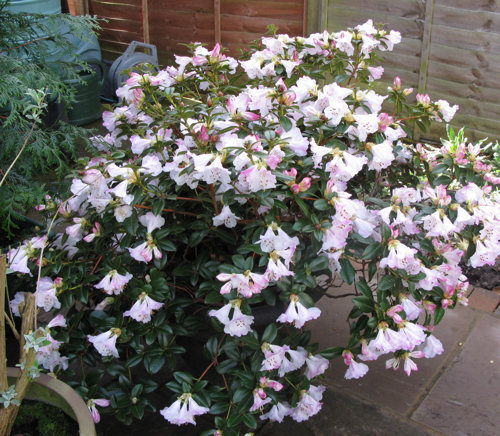
Early rhododendron in full bloom
My earliest rhododendron is gorgeous this year because there has been no frost since its buds started opening.
I saw my first brimstone butterfly.
I sowed some hellebore seeds from Chiltern Seeds last year. They wanted to be left for a certain number of weeks at a complicated temperature, so I put them in the fridge and then took them out, but nothing happened, so I put them outside, with the pot still inside a plastic bag, and when I looked at them this morning, there were two seedlings.
So it is definitely spring.
Apart from monitoring the seasons, I went to the dump with some rubble, and chopped some more bits off the Leylandii. When the soil dries out a bit more I am now ready to dig the first one up.






